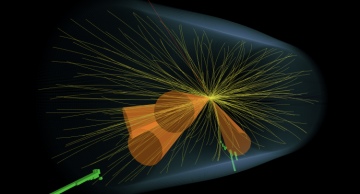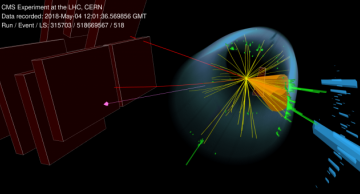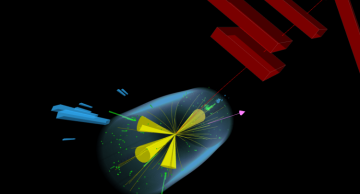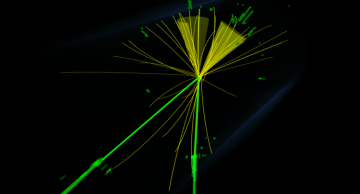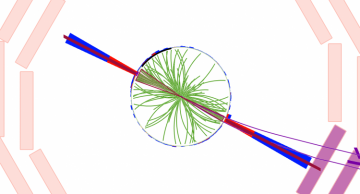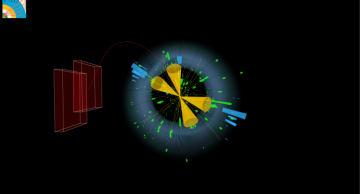Since the Higgs boson discovery in 2012 by the CMS and the ATLAS collaborations, the interaction of the Higgs boson with other fundamental particles as well as with itself are studied with ever-increasing precision to pin down the nature of this new…
News
|
fblekman |
Physics
|
mazumdar |
Physics
The collision of high-energy protons at the LHC breaks them apart and allows us to look at its constituents. Surely there are more interesting stuff in store, compared to the usual constituents at lower energy, the up and the down type quarks.…
|
mazumdar |
Physics
The Higgs boson is peculiar in many respects. Like most other elementary particles, it is unstable and lives only for an extremely short time, 1.6 x 10-22 seconds, according to the established theory of particle physics (the standard model). Pretty…
|
fblekman |
Physics
The Higgs boson, once the sought-after holy grail of particle physics, has now been with us for almost a decade. By now physicists are able to use the Higgs boson itself as a tool for the next discovery beyond the standard model. …
|
fblekman |
Physics
Apart from the “World Wide Web,” three Ws may also have a different interpretation in the LHC era. The standard model of particle physics is a mathematical construct that connects three of the four fundamental forces of nature and classifies all…
|
mazumdar |
Physics
The standard model of particle physics is our current best theory to describe the most basic building blocks of the universe, the elementary particles, and the interactions among them. At the heart of the standard model is a hypothesis describing…
|
mazumdar |
Physics
After the Higgs boson discovery in the year 2012, the standard model of particle physics offers a complete and consistent description of elementary particle interactions that, despite the many attempts, has not been falsified by experimental…
|
fblekman |
Physics
As physicists seek the elusive particles that may reveal a new understanding of the universe’s inner workings, one intriguing possibility is the conceivable existence of new particles that live in a shadow universe, called the “dark sector.” The…
|
mazumdar |
Physics
A recent result from CMS searches for long-lived particles through the so-called “Higgs portal” in ways never done before.
For about a decade now the CMS experiment at the CERN LHC has collected and analyzed data from hadron collisions, mainly…
|
fblekman |
Physics
This year marked the ninth anniversary of the discovery of the Higgs boson; the Standard Model particle linked to the mystery of creating the mass of all the other fundamental particles through the so-called Higgs mechanism. While a single Higgs…
|
fblekman |
Physics
Could you imagine what the dark part of the universe is like?
The Standard Model of Particle Physics explains matter at the subatomic level and the related phenomena such as interactions and forces between the subatomic particles. Still, we…
|
fblekman |
Physics
The interaction of the Higgs boson with its own field leads to its mass generation. Since the Higgs boson mass has already been measured, the study of the Higgs pair production at the LHC reveals directly the strength of the Higgs self coupling λHHH…

